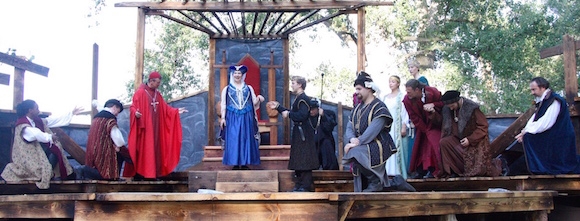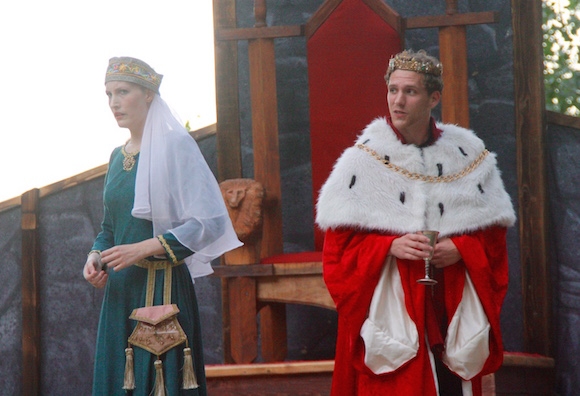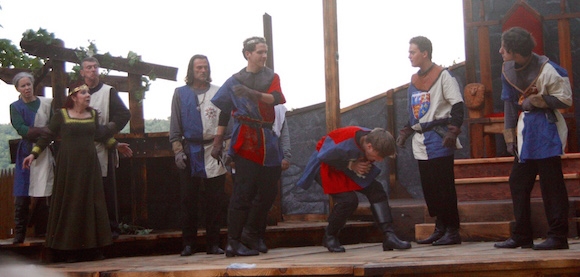It is entirely possible to follow and enjoy Richard III without knowing everything that happened in the earlier history plays in the sequence, but the experience is even better if you know about a few key things that happened in the Henry VI plays.
If you saw our Henry VI last summer, you might remember all of this, but here's a quick review just in case:
Henry VI became king at a very young age, when his father, Henry V, died. This resulted in a power struggle in which many nobles competed to control the young king.
Out of this turmoil a noble emerged with a competing claim to the English throne: Richard, Duke of York — the father of the Richard who eventually becomes Richard III.
York's claim to the throne was passed on to him by his uncle, Edmund Mortimer. Mortimer had been proclaimed heir to the throne by Richard II before Richard was deposed by Henry IV, and in both the Henry IV plays and Henry V, there were attempts to unseat the reigning king and put Mortimer on the throne instead.
Mortimer and York could claim descent from Lionel, Duke of Clarence, the second son of Edward III. Henry IV, Henry V, and Henry VI were descended from John of Gaunt, Duke of Lancaster — the third son of Edward III. In theory, then, Mortimer and York's claim was stronger than that of Henry VI.
York also made the argument that he was better suited to be king than Henry. Henry grew up to be a gentle, deeply religious man, but not a strong ruler. York was arrogant and calculating, but he was a decisive leader and a proven military commander.
The battle between York and Henry VI and their followers is what we now know as the Wars of the Roses, with the House of York being represented by a white rose and Henry VI and the House of Lancaster by a red rose.
As the wars proceeded and Henry VI proved unable to command effectively, his wife, Queen Margaret, took charge and led the armies of Lancaster herself.
During a time of supposed truce, Margaret led the Lancaster forces in a siege against York's castle. One of Margaret's followers kills York's youngest son, the Earl of Rutland.
Margaret later captures York, taunts him about the death of Rutland, and offers him a handkerchief soaked in Rutland's blood to dry his tears. Then she stabs York.
York's three surviving sons — Edward, George, and Richard — take over the fight after York's death and eventually win. The Yorks capture Henry VI and send him to the Tower.
Margaret flees to France with her and Henry VI's son, Prince Edward. Prince Edward is married to Lady Anne Neville, daughter of the Earl of Warwick — a former ally of York who switched his allegiance to Lancaster.
With Henry VI captured and Margaret fled, York's oldest son Edward is crowned King Edward IV. He breaks a politically advantageous agreement to marry the sister of the king of France, and instead impulsively marries Elizabeth Woodville — a woman that no one else thinks deserves to be queen, who immediately begins securing new titles for her relatives.
Margaret and Prince Edward return from France with a new army and fight a final battle with the Yorks. The Yorks win, and Margaret and Prince Edward are captured. All three of the York brothers (King Edward IV, George, and Richard) stab Prince Edward to death.
Richard then visits Henry VI in the Tower, and stabs him to death.
So, Edward IV is king and married to Elizabeth. Henry VI and his son Prince Edward are dead. Margaret is still alive and a prisoner of the Yorks. And that's where things stand at the beginning of Richard III!